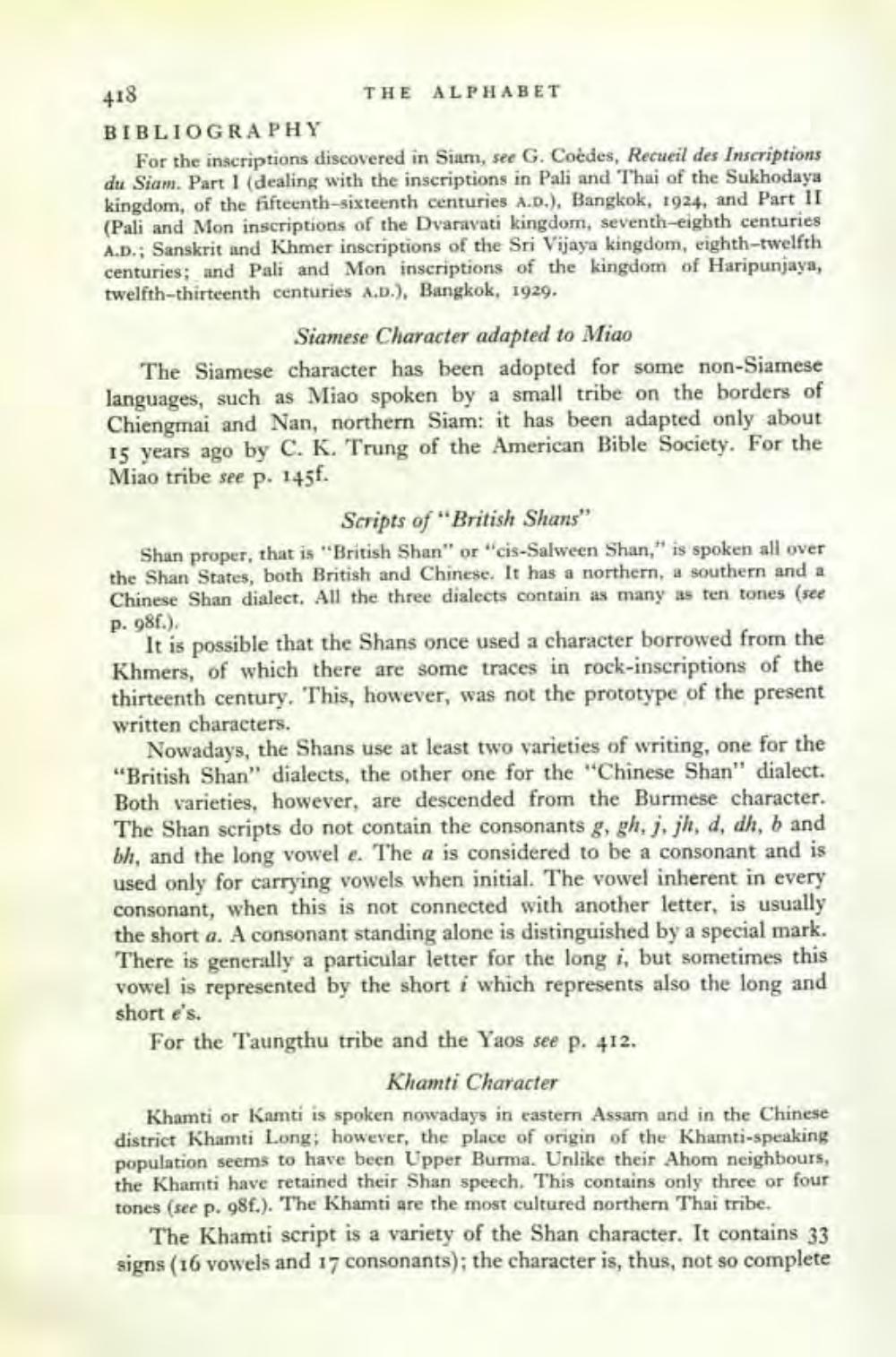________________
418
THE ALPHABET
BIBLIOGRAPHY
For the inscriptions discovered in Siam, see G. Coèdes, Recueil des Inscriptions du Siam. Part 1 (dealing with the inscriptions in Pali and Thai of the Sukhodaya kingdom, of the fifteenth-sixteenth centuries A.D.), Bangkok, 1924, and Part II (Pali and Mon inscriptions of the Dvaravati kingdom, seventh-eighth centuries A.D.; Sanskrit and Khmer inscriptions of the Sri Vijaya kingdom, eighth-twelfth centuries; and Pali and Mon inscriptions of the kingdom of Haripunjaya, twelfth-thirteenth centuries A.D.), Bangkok, 1929.
Siamese Character adapted to Miao
The Siamese character has been adopted for some non-Siamese languages, such as Miao spoken by a small tribe on the borders of Chiengmai and Nan, northern Siam: it has been adapted only about 15 years ago by C. K. Trung of the American Bible Society. For the Miao tribe see p. 145f.
Scripts of "British Shans"
Shan proper, that is "British Shan" or "cis-Salween Shan," is spoken all over the Shan States, both British and Chinese. It has a northern, a southern and a Chinese Shan dialect. All the three dialects contain as many as ten tones (see p. 98f.).
It is possible that the Shans once used a character borrowed from the Khmers, of which there are some traces in rock-inscriptions of the thirteenth century. This, however, was not the prototype of the present written characters.
Nowadays, the Shans use at least two varieties of writing, one for the "British Shan" dialects, the other one for the "Chinese Shan" dialect. Both varieties, however, are descended from the Burmese character. The Shan scripts do not contain the consonants g, gh, j, jh, d, dh, b and bh, and the long vowel e. The a is considered to be a consonant and is used only for carrying vowels when initial. The vowel inherent in every consonant, when this is not connected with another letter, is usually the short a. A consonant standing alone is distinguished by a special mark. There is generally a particular letter for the long i, but sometimes this vowel is represented by the short i which represents also the long and short e's.
For the Taungthu tribe and the Yaos see p. 412.
Khamti Character
Khamti or Kamti is spoken nowadays in eastern Assam and in the Chinese district Khamti Long; however, the place of origin of the Khamti-speaking population seems to have been Upper Burma. Unlike their Ahom neighbours, the Khamti have retained their Shan speech. This contains only three or four tones (see p. 98f.). The Khamti are the most cultured northern Thai tribe.
The Khamti script is a variety of the Shan character. It contains 33 signs (16 vowels and 17 consonants); the character is, thus, not so complete




